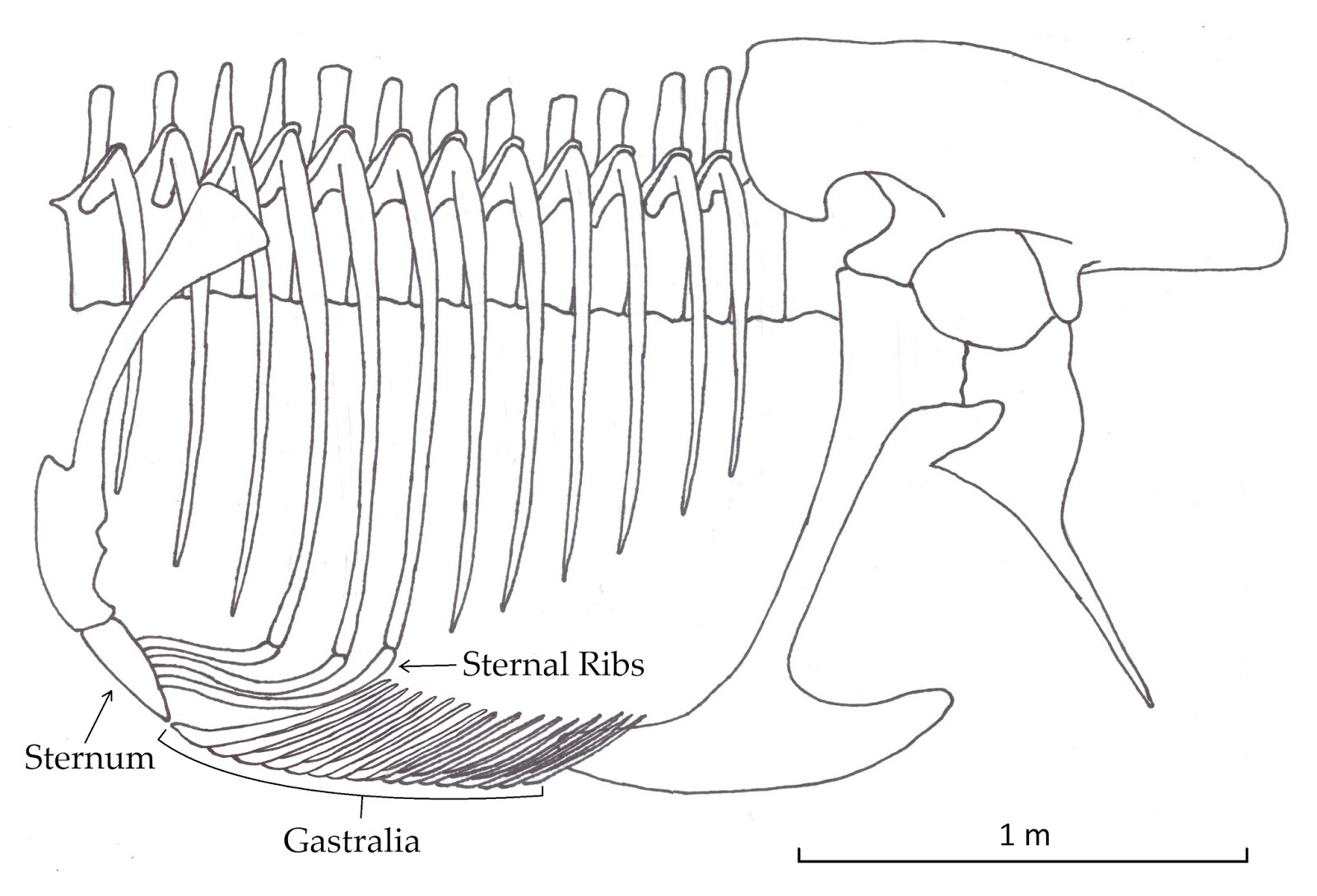Research Update on Ivan
June 1, 2017

Last June, Steven King, the Curator at the Museum of World Treasures, went on a research trip to study Ivan the Tyrannosaurus rex. Stops included the site where Ivan was excavated, the Museum of the Rockies and the Royal Tyrrell Museum to examine tyrannosaur material in their collections. The trip was a success and now, a year later, more information can be shared about the trip and some of the information that has been compiled.
One of the purposes of the trip was to determine how tyrannosaurs use their gastralia. The gastralia are rib-like bones found under the chest of the animal. The Museum has several of Ivan’s gastralia and these had been studied before the trip, but never compared to other tyrannosaurs. Based on material from other museums, tyrannosaurs such as Tyrannosaurus,Gorgosaurus, and Albertosaurus have gastralia that are very similar to those on the Ivan specimen. In fact, one Gorgosaurus at the Royal Tyrrell Museum has a complete, intact series of gastralia that is a fantastic example of the original skeletal structure of these creatures.
There was also a surprise on the trip. While looking through the collection at the Royal Tyrrell Museum, Mr. King found a few pieces that were labelled as gastralia. However, they were shaped differently and appeared to be sternal ribs. If they are, they would be the first sternal elements identified in a tyrannosaur. Sternal ribs connect the ribs to the sternum. In birds, they play an important role in breathing, pushing the sternum out and down when it breathes in. The sternal ribs suggest that a tyrannosaur also had a sternum. If it did, the sternum would be too small to be used in breathing. Perhaps the gastralia were also used. They could be pulled forward and down with the sternum expanding the whole bottom of the chest.
Suggesting that tyrannosaurs breathed using sternal ribs, a sternum, and gastralia is a new idea. Mr. King’s findings regarding Ivan and a tyrannosaur’s chest structure will be published next year and we'll hope this information will stimulate debate and discussion among paleontologists from around the world. Ivan’s study demonstrates our commitment to ongoing research here at the Museum of World Treasures.
